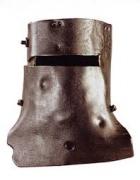Am I an assassin or a rabbit, a raider or connoisseur?
I have just finished one of the best investment books I have read in a long time; it contains some great little gems, which I hope will improve my returns. One never stops learning; I continually strive to become a better investor and what better way than by learning from the mistakes and insights of others.
“The Art of Execution; How the world’s best investors get it wrong and still make millions” by Lee Freeman-Shor, took no more than a couple of hours to read and comes highly recommended.
Background
Through his job at Old Mutual, the author appointed 45 external investment managers, to manage concentrated portfolios, valued from $20m to $150m, between 2006 and 2013. He instructed them to invest only in their best 10 ideas and he not surprisingly got very divergent results. In this book he observes the differing methods of the managers; he found that in general, all the managers were much of a muchness when it came to picking stocks; of the 1866 investments made only 49% made money but what separated the winning portfolios from the also rans, was execution. Some of the “legendary investors” were only right 30% of the time but still made money overall!
He found the managers fell into five categories. When it came to handling losing investments they were either assassins, hunters or rabbits and when dealing with winners, either raiders or connoisseurs.
In short:
- An assassin is an investor who deals promptly and unemotionally with his failures; cuts early, or at least at a pre-determined level and moves on.
- A hunter tends to watch, analyse and then at the right time add, in attempt to average down and salvage the investment. Many were successful with this strategy; never perhaps regaining the whole loss but at least reducing it.
- A Rabbit! Need I say more. They watched the investment continue to fall, neither cutting nor adding. The rabbits tended to have the worst performance by far.
- Raiders were managers who snatched at any profit they made; 10-30% was enough. The money was then re-invested and as we saw earlier, only with a 50%ish chance of success.
- The connoisseur however, let the winners run, perhaps trimming now and then but at least having a decent exposure to the holding for the duration. These were the investors who made 100% or more from investments.
The best combination was the assassin/connoisseur and by…











